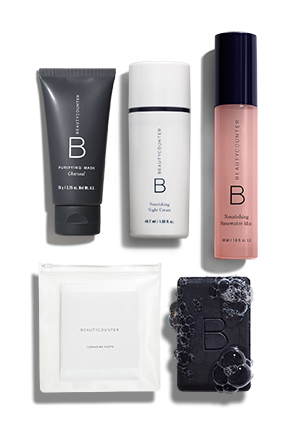12 February, 2020
Candida: Are You Making These 6 Mistakes?

I hear so many people talking about candida these days with all of the concern out there about gut health. One would say that candida is super trendy right now. There are lots of diets, cleanses, and detoxes out there to treat candida. But if you do it on your own you could be making these 6 common mistakes and waste a lot of time, energy, and money! Nobody wants to do that.
Candida isn’t generally bad. In fact it is a beneficial flora that everyone should have in their digestive tract when it is at normal levels. It is when it starts to overgrow that it can become a problem and result in symptoms like: fatigue, digestive discomfort, muscle aches, brain fog, low libido, hormone imbalance, skin rashes.
1. Do you even have candida to begin with?
You go on the internet and see all of the symptoms for candida. You feel like all of the symptoms fit you to a T and self diagnose yourself with candida. But symptoms often overlap or can be extremely nonspecific. The symptoms for candida can be similar for symptoms of a parasite, h.pylori, bacteria, viruses, worms, SIBO or general symbiosis. You could even be dealing with something like Lyme or mold. There are things that could be caused by any number of other conditions that aren’t yeast overgrowth: fatigue, digestive discomfort, muscle aches, brain fog, low libido, hormone imbalance, skin rashes.
My two favorite ways to test for candida are with the GI MAP stool test (I use this one in my practice and LOVE it!) or an Organic Oats Test (OAT). The problem with the OAT test is that it can only identify if you have yeast but it will not tell you what type you have. Which brings me to my next mistake…
2. If you do have fungi, it may not be candida!
Candida is only one type of yeast or fungi that can be overgrown in your gut. You could have something like Microsporidium which is a type of parasitic yeast that may not respond to the same treatment that candida does. You could be wasting your time and money on the WRONG treatment plan. The good news is that the GI MAP stool test looks for 5 different types of fungus or yeast.
Mold is also a fungi. Chronic, long-term exposure to mold in sensitive individuals can severely weaken your immune system. And once your immune defenses are compromised, this gives candida the opportunity to expand through your digestive system. But candida can be hard to eliminate if you don’t also address any mold issues.
3. Diet alone isn’t enough to treat candida.
If you go online and type in “candida diet” you will find lots of resources on foods or even meal plans that claim to help you eliminate yeast. They tend to be very low in sugar but also low in starchy vegetables like sweet potatoes or plantains. The theory is that yeast feeds on sugar so if you cut out all sources of sugar in your life (even the healthy ones) that you can starve candida. WRONG! And you also might actually harm your hormones with such a low carbohydrate diet.
Yeast is opportunistic and very adaptive so if you don’t eat carbohydrates then it will start feeding off other things including protein, fats, or even ketones. It will do what it can to survive. You may feel better initially while doing a candida diet but that is likely due more due to the fact that you are eating more whole foods and less sugar.
4. Your protocol is too short.
Since diet alone isn’t enough to address candida you need to include herbal anti-fungal supplements to help kill the yeast. But it needs to be long enough. Many of the candida cleanses I see on the market don’t last long enough, only 3-4 weeks in many cases. The life-cycle of candida is about 30 days so you want to treat it for at least 2 life-cycles to best clear it or at least 60 days.
5. You aren’t treating other infections.
I NEVER see yeast in anyone by itself. It is often a secondary infection. If you have parasites, worms, h.pylori, bacteria in your gut as well, these pathogens create toxins which can feed yeast and contribute to overgrowth. If you only focus on spot treating one pathogen in the gut then your candida will likely come back.
6. Not addressing why you got candida overgrowth.
Birth control like the pill, patch, ring, IUDs have synthetic estrogen that can feed yeast. Synthetic estrogen can create a favorable environment for yeast to grow. Ever notice that before you get your period that you develop more UTIs? Even copper IUDs can drive up your bodies estrogen levels. So you may not be able to fully eliminate this yeast overgrowth until you go off your birth control.
Heavy metals in general can make it difficult to say goodbye to candida overgrowths. It has been tested and proven that candida thrives in heavy metal-polluted environments (and everyone is exposed). Candida can be helpful for binding mercury and other heavy metals so that they cannot enter your bloodstream. While in one sense this helps protect your body from the effects of mercury, it can also allow Candida to overgrow. Metals may also disrupts your gut microbiome, leaving an opening for Candida and harmful bacteria to overgrow.
Other things like antibiotic use, eating a diet high in refined sugar and carbohydrates, high alcohol intake, a weakened immune system, diabetes, and high stress can also contribute to yeast overgrowth.
So how can you be sure you are addressing candida (if you do have it) properly? You need to get tested and work with someone that can guide you on the right path to fully eliminating the root of the problem. Are you ready to tackle your gut health naturally? Ready to be serious about your health? Apply to work with me and my team.
ARE YOU READY TO GET TESTED AND TURN YOUR HEALTH AROUND?
As a Registered Dietitian and Functional Diagnostic Nutrition Practitioner, I help clients get proper testing, assist in the process of reading those results using clinical correlation (treating the patient and not just the test results), and give them the proper tools (diet, supplements, and lifestyle) to start the healing process.









